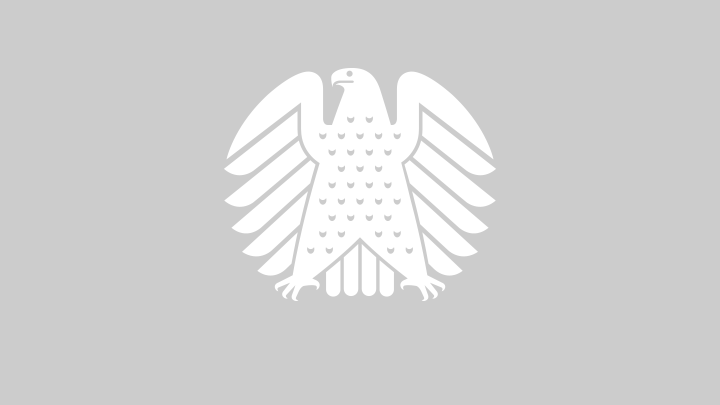The federal eagle

The Federal Eagle is one-headed, with its head turned to its right wing and no crown on its head; it does not touch the edges of the shield. (© picture alliance / ZB | Jens Kalaene)
The symbol of German statehood with the richest traditions is the eagle. Its origins can be traced back to the early years of the Holy Roman Empire. It featured on the King’s coat of arms and almost all the Imperial princes bore the eagle on their escutcheons as a way of displaying their status as vassals of the King. In contrast to the King’s one-headed eagle, the Emperor’s emblem was the double-headed eagle. Introduced in 1433, this remained the emblem of the Emperor and the state until the end of the Holy Roman Empire of the German Nation in 1806.
In the course of the 1848 Revolution, the National Assembly at St. Paul’s Church in Frankfurt decided the double-headed eagle should be the emblem of the new Confederation. This was intended to emphasise the continuities with the state symbolism of the Holy Roman Empire. When the German Empire was proclaimed in 1871, a decision was taken against the double-headed eagle and therefore against the associations it implied with the Holy Roman Empire and the Revolution of 1848/49. Instead, the Prussian tradition was drawn on in the shape of the one-headed eagle.
Undisputed state symbol
In the Weimar Republic too, the one-headed eagle was a state symbol that aroused no controversy. On 11 November 1919, Reich President Friedrich Ebert announced that, ‘On the basis of a decision of the Reich government […], the Reich coat of arms shall feature the one-headed black eagle on a gold-yellow field, its head turned to the right, its wings open, but with closed feathering, and its beak, tongue and claws in red. […] Minor artistic modifications shall be permissible for any particular purpose, however."
This announcement was repealed by the National Socialists in 1935, who decreed the NSDAP eagle should be the national symbol. The graphic designs of the party and state emblems were identical, except that the head of the state eagle was turned to the right, while the head of the party eagle was turned to the left.
Different designs of eagle
The Announcement of the Federal President concerning the Federal Coat of Arms and the Federal Eagle of 20 January 1950 adopted the text of Friedrich Ebert’s announcement of 11 November 1919 almost word for word and the design of the eagle from the Weimar Republic. As far as the artistic rendition of the eagle was concerned, broad scope was therefore allowed with regard to the heraldic beast’s appearance. It was merely laid down that it should be one-headed, with its head turned to its right wing, that it should have no crown on its head and that it should not touch the edges of the shield.
For instance, eagles of different designs are used by the Federal President, the Bundesrat, the Federal Constitutional Court and the German Bundestag, as well as featuring on coins and even the German sport associations’ national team shirts.